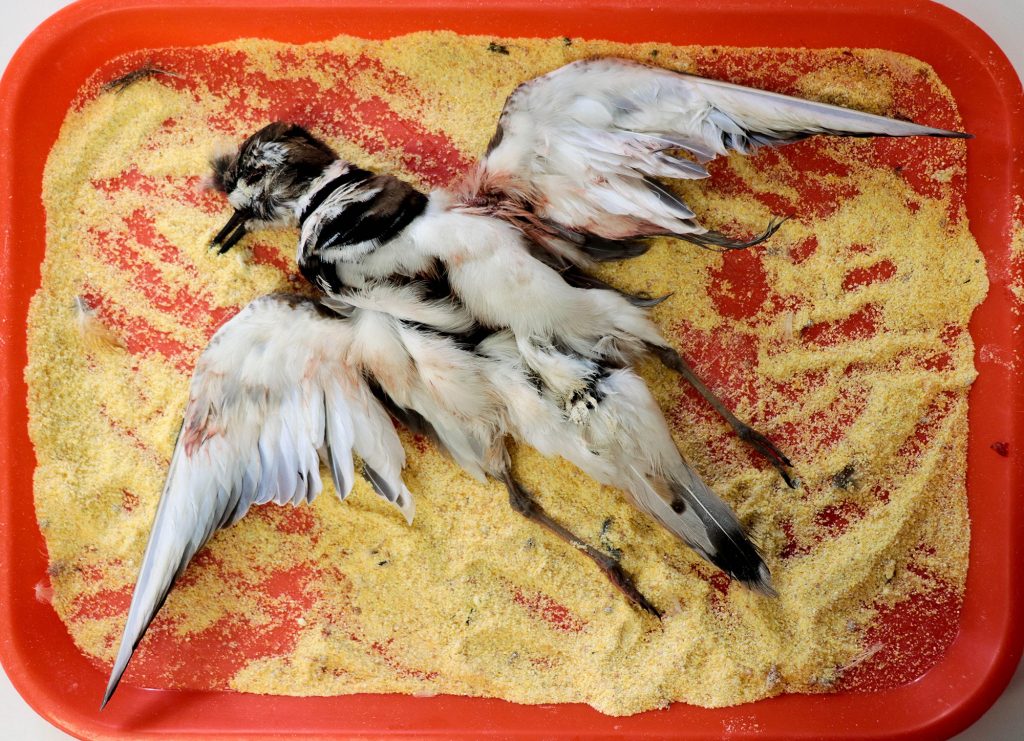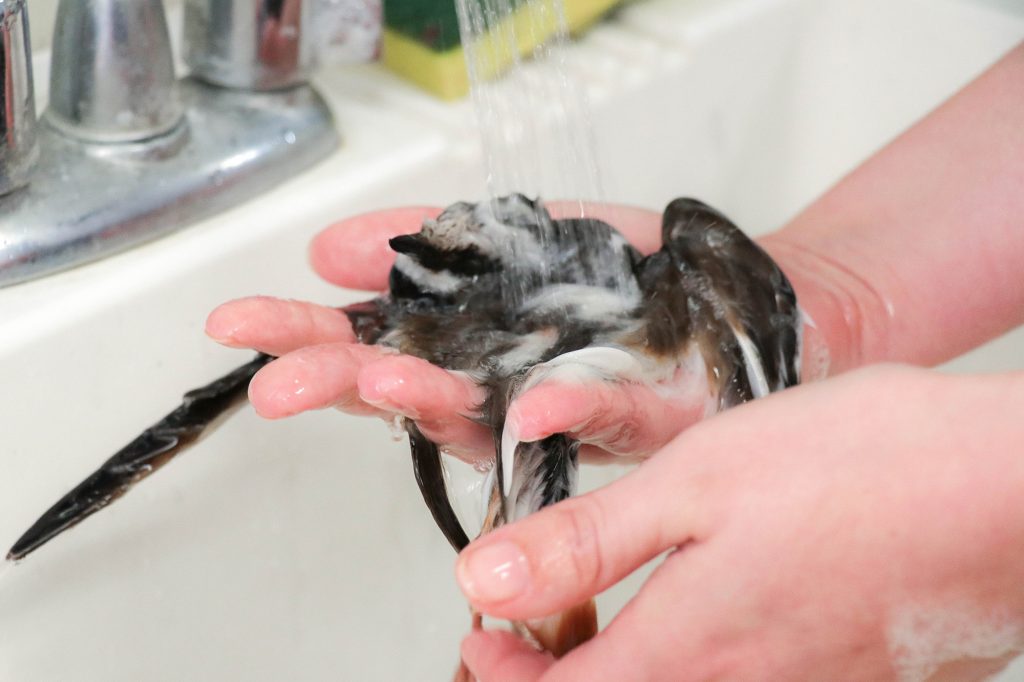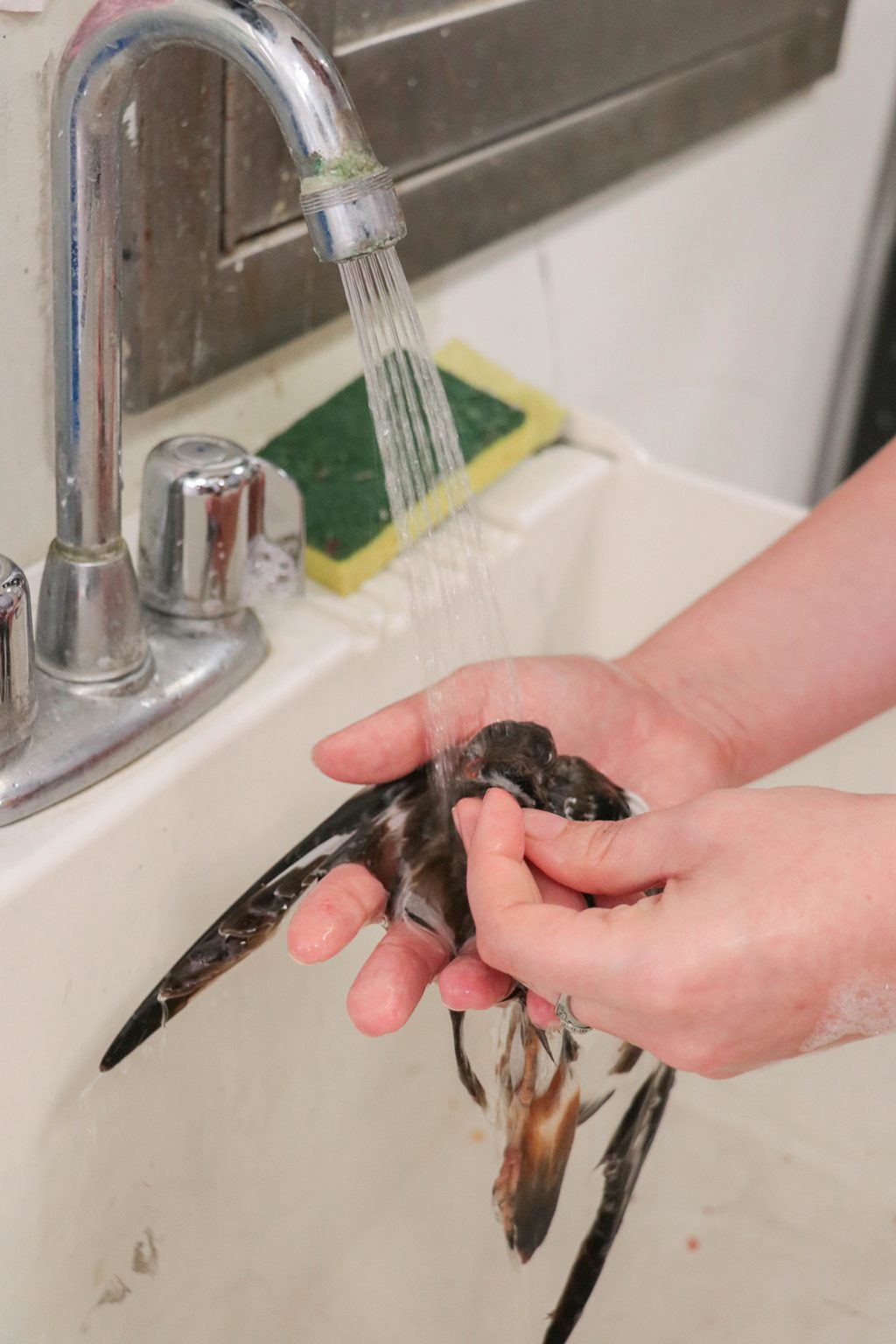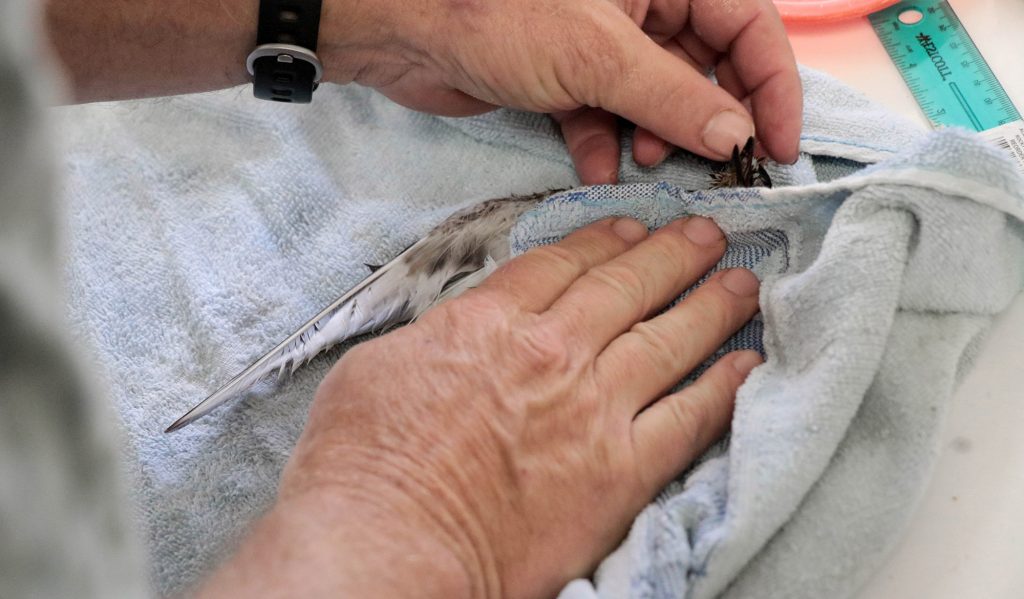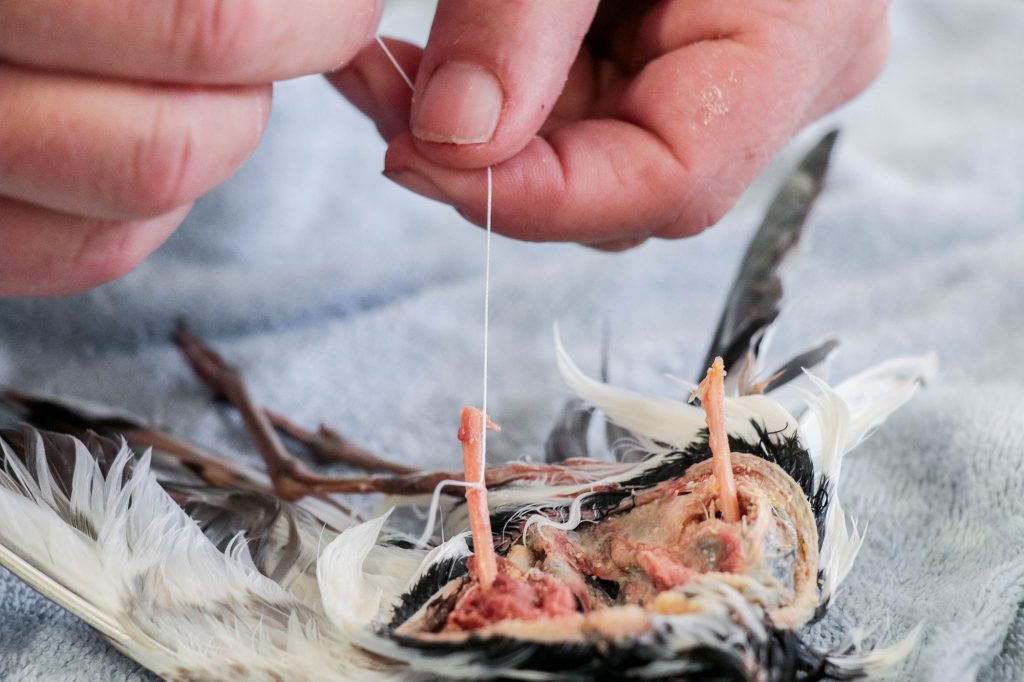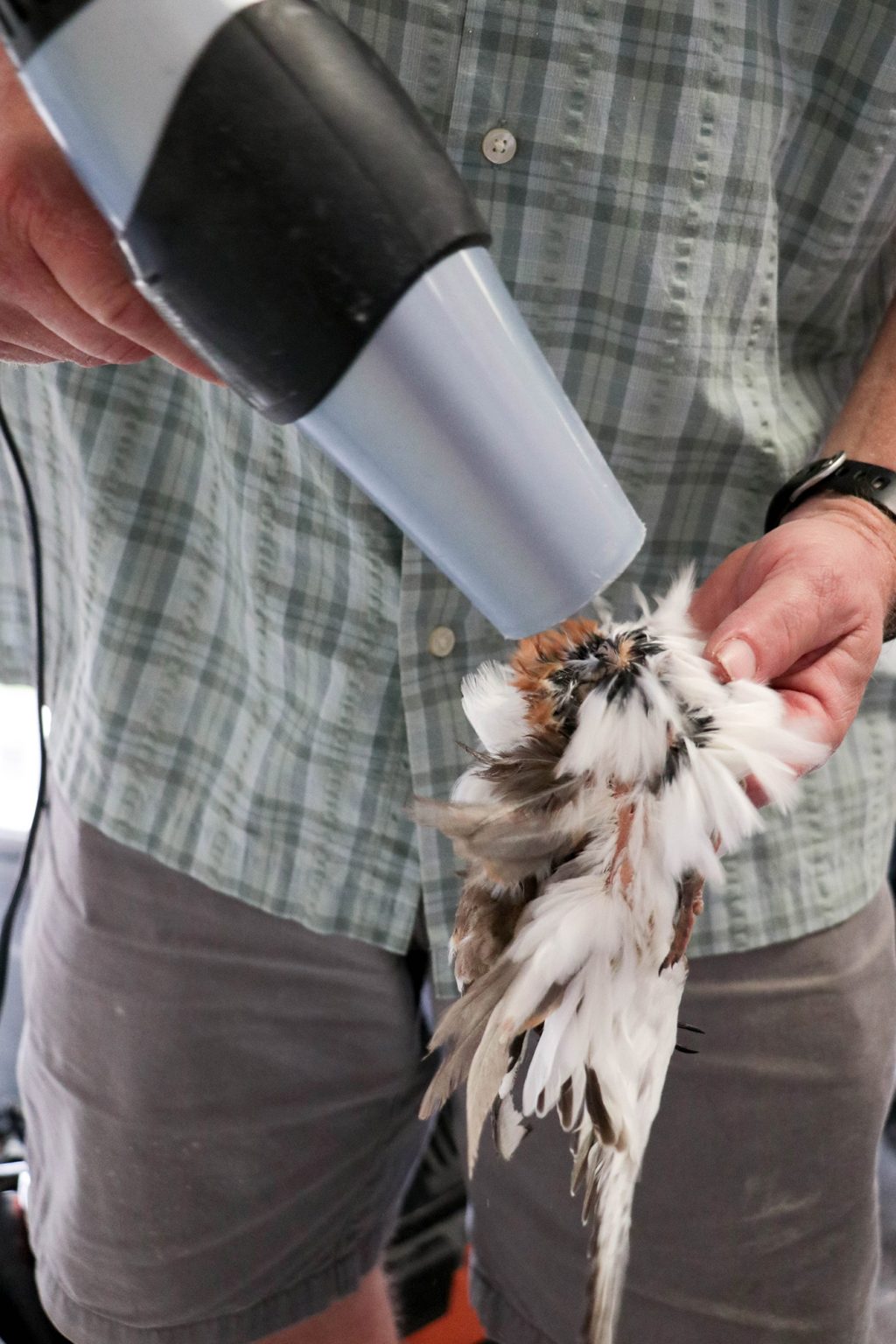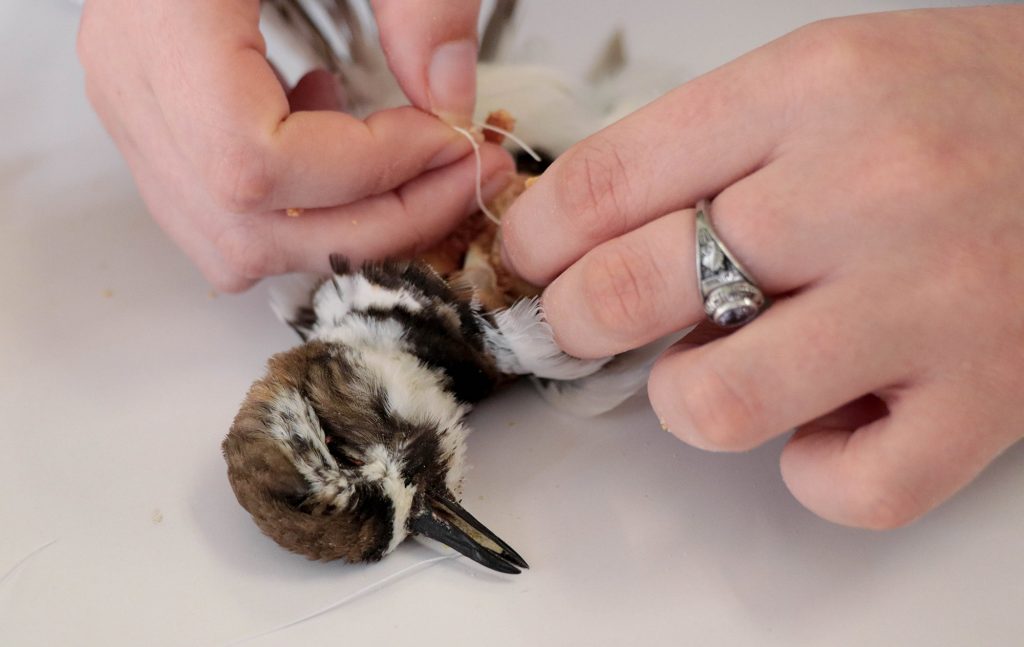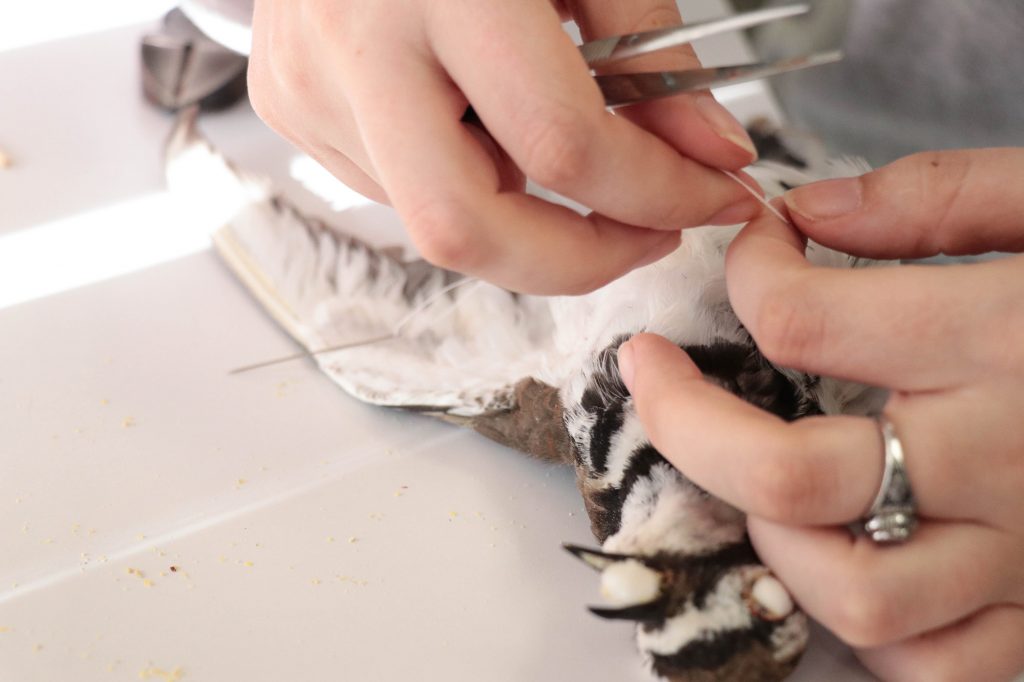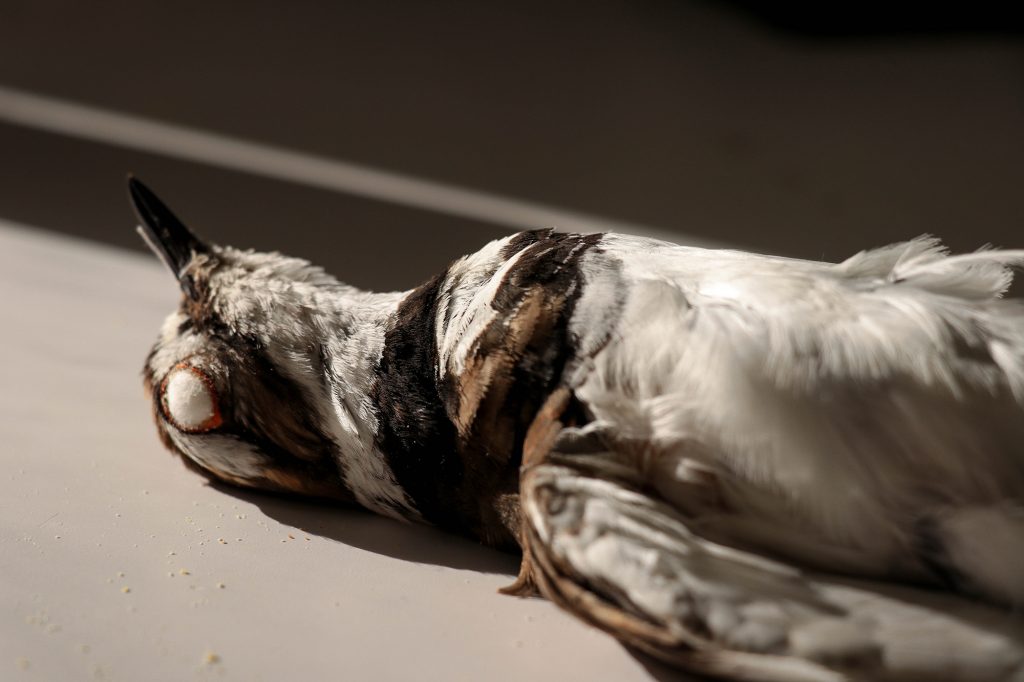Specimens are often donated to the Florida Museum by local residents and citizen scientists. If they hold scientific value or are important to a collection, these specimens are prepared by staff and entered into our collections. Over the course of time, museum collections can tell a story about the changes to an environment and fluctuations in biodiversity.
This killdeer was found badly wounded, likely after losing a fight with a house cat. About 90 percent of all the Florida birds the museum acquires are from wildlife rehabilitation clinics. Sick or injured birds that are brought to these clinics usually have about 40-50 percent mortality rates, and those that die are saved for the Florida Museum. This is the main way we add to our ornithology collections.
Andy Kratter and Emily Griffiths cleaned and prepared the bird into what is called a “skin.” This leaves the bird’s feathers, skin and many bones intact but removes much of its tissue. Then the bird specimen is dried and entered in the collection.
Killdeer (Charadrius vociferus) earned their name from their shrill call. They are common shorebirds but can be found near wetlands, freshwater ponds and still bodies of water. They are found throughout a great part of North America, and because of their high numbers and large range, are rated as “Least Concern” by the International Union for Conservation of Nature.
